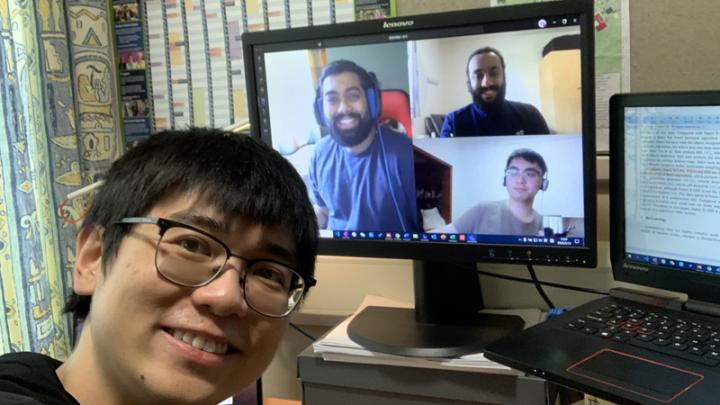Students at Cranfield University have designed computer models that can identify COVID-19 in X-rays

Credit: Cranfield University
Students at Cranfield University have designed computer models that can identify COVID-19 in X-rays.
The models use computer vision and artificial intelligence (AI) to analyse chest X-ray imagery. It can classify information which would not normally be recognised with the naked eye and assist with the diagnosis of COVID-19.
A common symptom of COVID-19 is pneumonia. The AI is able to detect anomalies in an X-ray, classifying which are positive for pneumonia, then a second model is used to diagnose if the pneumonia is caused by the COVID-19 virus.
Two groups studying for their MSc programme, specialising in Computer and Machine Vision (CMV option), decided to take up this challenging topic as their group project. The group project provides the students with the opportunity to work collaboratively on problems and to devise a solution.
This year the group project activity was itself impacted by COVID-19 and, due to lockdown, some students returned to their homes overseas. The determined groups continued with their projects remotely, despite being thousands of miles apart in China and France, as well as nearby Cranfield and Milton Keynes. The video conferencing and IT facilities provided by the University to the students was vital in allowing access to the necessary computational resources, ensuring the continuation and success of their research.
The lack of X-ray imagery in the public domain containing COVID-19 details was a challenge – however the teams were able to build detailed information from various sources.
The groups employed conventional machine learning algorithms as wells as deep learning frameworks, a machine learning technique that teaches computers to learn by example. The AI model employed in this project was able to predict results with great accuracy. However, the research teams believe that they are able to further develop new algorithms to produce even more robust and reliable results.
The teams are led by Dr Zeeshan Rana, Lecturer in Computational Engineering at Cranfield University. He is now exploring collaboration opportunities with medical authorities or industry to develop the project to the next level, using more advanced AI algorithms and CT (computed tomography) scans to show greater detail and accuracy in the results.
Dr Zeeshan Rana said: “The research carried out in this pilot project has led to some extremely promising results and we are looking to build on this success rapidly to help in the fight against COVID-19. I am incredibly proud of the work my researchers have carried out. They are a credit to the University and I’m delighted that we are able to support them remotely in carrying out their studies.”
###
Media Contact
Chris Leaman
[email protected]





